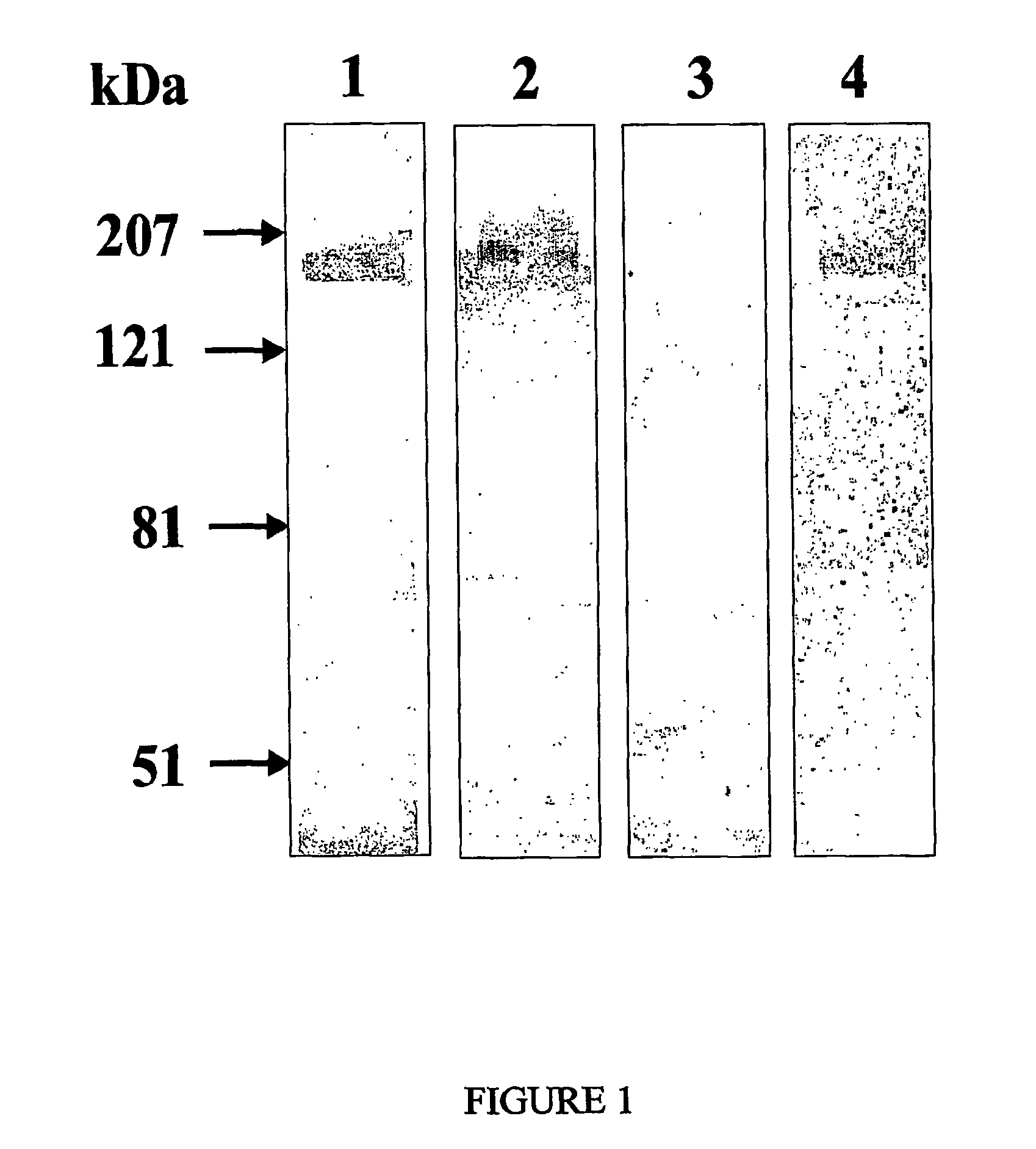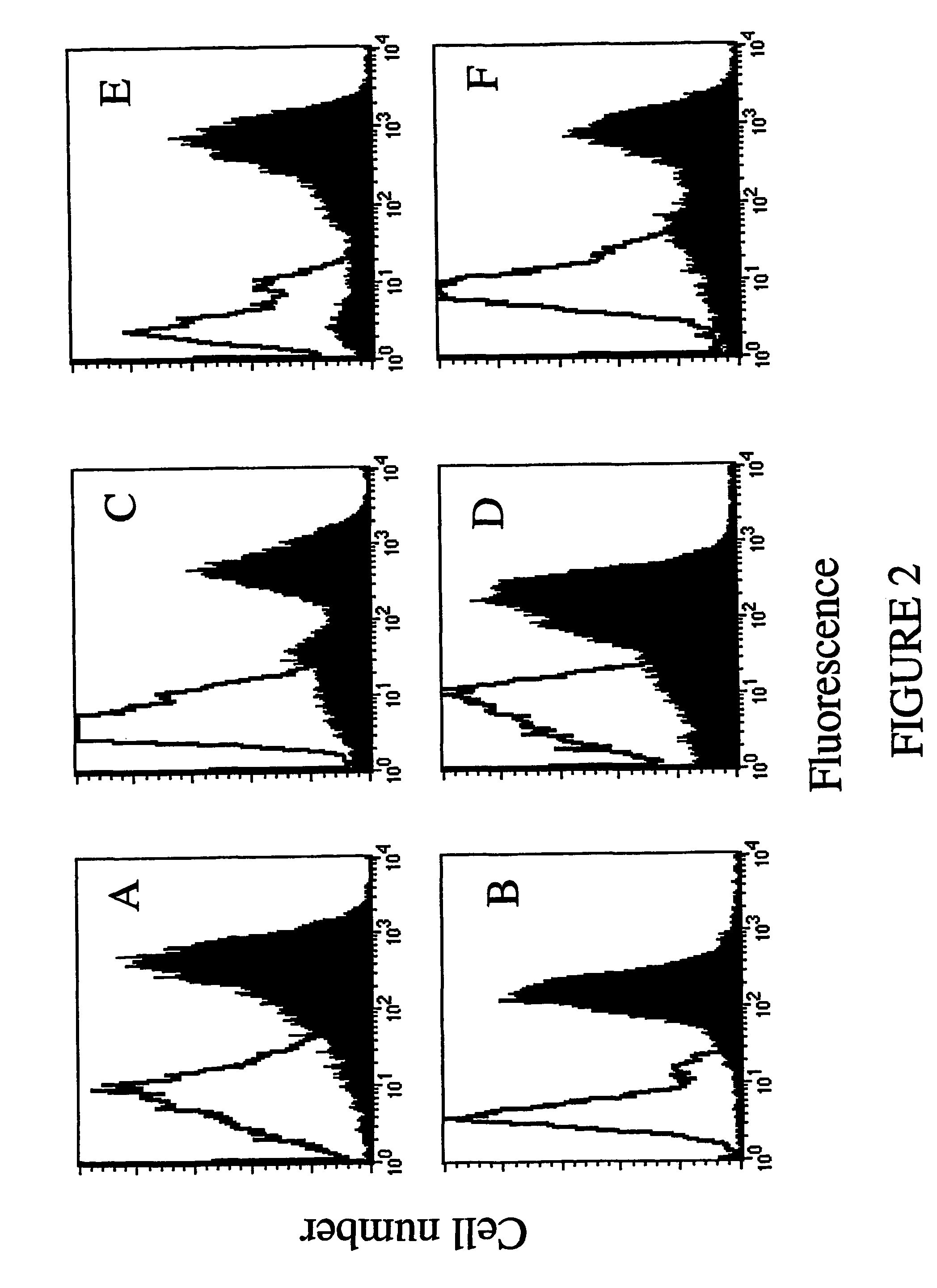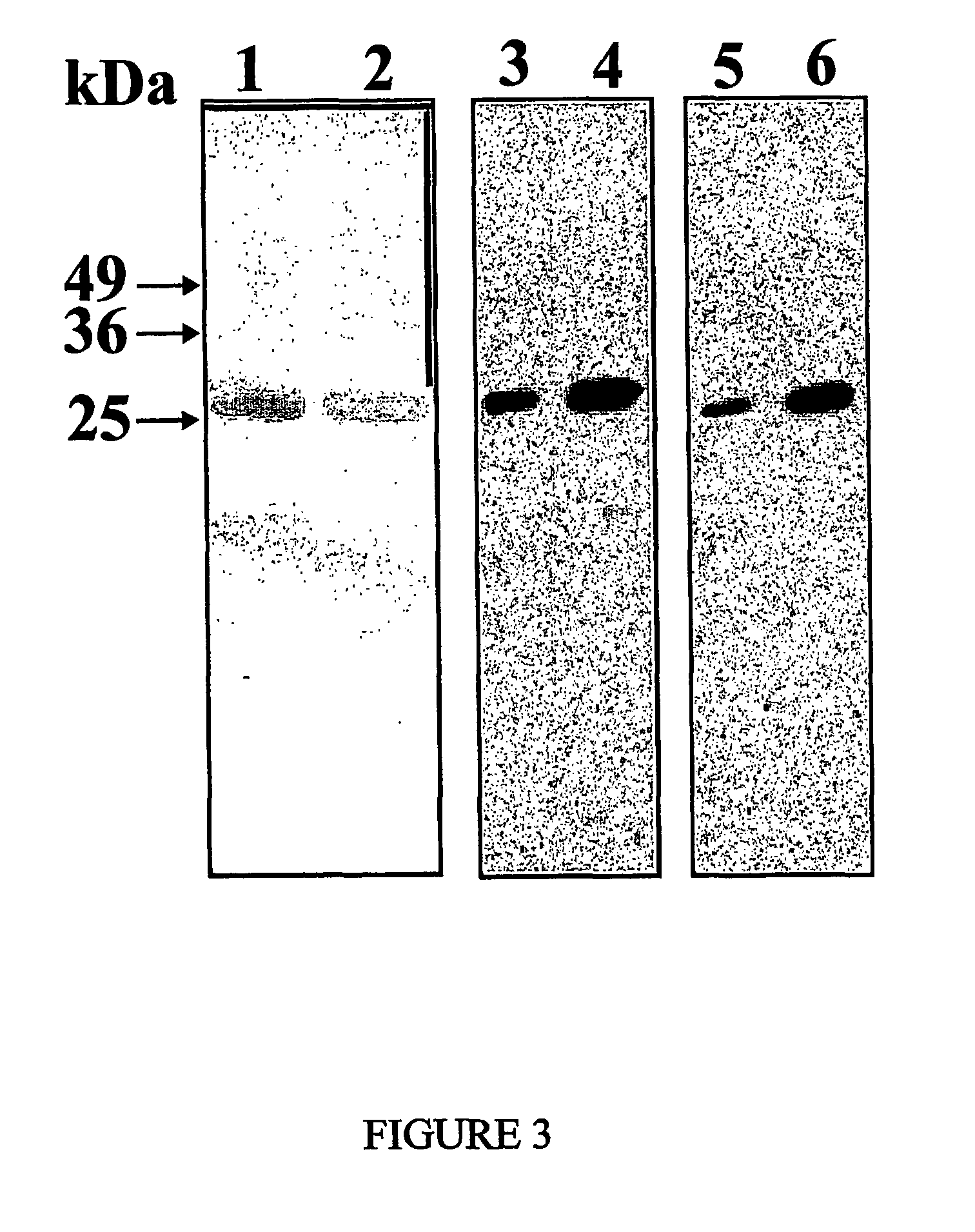Human mini-antibody cytotoxic for tumor cells which express the ErbB2 receptor
a tumor cell and erbb2 receptor technology, applied in the field of human mini-antibody cytotoxic for tumor cells, can solve the problems of limited use of these mabs as immunotherapeutic drugs, no antitumor activity, and selection of antibodies that do not recognize the antigen in its native state, and achieve strong inhibitory effect on phosphorylation, effectively stimulated the phosphorylation of erbb2, and increased phosphorylation of tyrosin
- Summary
- Abstract
- Description
- Claims
- Application Information
AI Technical Summary
Benefits of technology
Problems solved by technology
Method used
Image
Examples
example 1
Parallel Selection on Different Cell Lines to Isolate a Human, ErbB2 Specific scFv.
[0092]The strategy devised for the isolation of an anti-ErbB2 scFv from the Griffin.l library (19) consisted in a double selection, with the use of two different combinations of “positive”, i.e. antigen-bearing, and “negative” cell lines. In the first combination, NIH 3T3 cells transfected with DNA encoding human ErbB2 (23) were used as antigen-positive cells, and untransfected NIH 3T3 as antigen-negative cells. In the second combination, a human breast cancer cell line, naturally expressing high levels of ErbB2 receptor (SKBR3 cells), and a human epidermoid carcinoma cell line (A431 cells), expressing the receptor at very low levels, were used as antigen-positive and antigen-negative cells, respectively. The strategy of using two combinations of positive and negative cell lines was devised to guarantee an effective selection of the anti-ErbB2 clones.
[0093]In each selection round, a mixture of “positi...
example 2
Characterization of Phage Antibodies Specificity.
[0098]To verify whether these clones were indeed specific for ErbB2, they were analyzed in their phage format by Western blotting performed on antigen-rich cell extracts prepared from the SKBR3 cell line. As shown in FIG. 1, positive scFvdisplaying phages (N.B. eliminare: from clone A recognized a protein of approximately 185 kDa, the molecular weight expected for the ErbB2 antigen. In the same experiment, a protein corresponding to the same molecular size was recognized by the murine MgR6 mAb (24) known to be directed against ErbB2 (25, 26). No positive bands were detected when an anti-thyroglobulin scFv phage preparation was used as a negative control (see FIG. 1). Notably, a positive band of the expected molecular weight was also obtained (see FIG. 1) when the Western blotting was performed with the A type phage clone on ErbB2 previously isolated from SKBR3 cell extracts by immunoprecipitation with the anti-ErbB2 MgR6 mAb.
[0099]The...
example 3
Expression and Characterization of Soluble Erbicin.
[0105]To prepare human anti-ErbB2 scFv from type A clone as a soluble molecule, the pHEN2 phagemid vector (a derivative of the pHEN1 vector (27)) containing the DNA encoding Erbicin, was used to transform the bacterial strain SF110 (32). After induction with IPTG, a periplasmic extract was prepared as previously described (33).
[0106]To verify whether the soluble anti-ErbB2 scFv retained the binding properties of the scFv displayed on phages, the periplasmic extract was analyzed by ELISA, as well as by flow cytometry using the cell lines tested with Ph-Erbicin. The results from both analyses showed that the anti-ErbB2 soluble scFv selectively binds to the antigen-bearing cells (data not shown). In its soluble format the scFv immunoreagent was named Erbicin.
[0107]Since the scFv encoding cDNA is cloned into the pHEN2 vector fused to a C-terminal hexahistidine sequence (SEQ ID N. 21), the recombinant Erbicin was purified by immobilized-...
PUM
| Property | Measurement | Unit |
|---|---|---|
| molecular weight | aaaaa | aaaaa |
| time | aaaaa | aaaaa |
| concentration | aaaaa | aaaaa |
Abstract
Description
Claims
Application Information
 Login to View More
Login to View More - R&D
- Intellectual Property
- Life Sciences
- Materials
- Tech Scout
- Unparalleled Data Quality
- Higher Quality Content
- 60% Fewer Hallucinations
Browse by: Latest US Patents, China's latest patents, Technical Efficacy Thesaurus, Application Domain, Technology Topic, Popular Technical Reports.
© 2025 PatSnap. All rights reserved.Legal|Privacy policy|Modern Slavery Act Transparency Statement|Sitemap|About US| Contact US: help@patsnap.com



